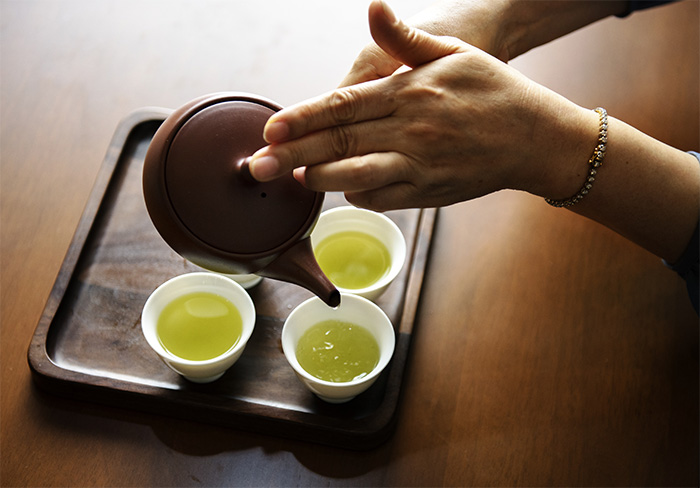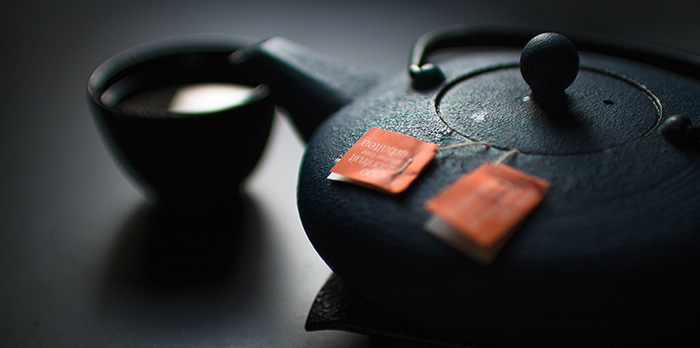By Paula Su
Although it might seem an easy task – after all, you only must heat the water and pour it over the tea – there are some details in this process that, even though are simple, might influence the whole experience. Whether it is to taste a cup alone or to share with other people, the art of preparing this millenarian beverage is found in the small details.
Photos by Paula Su
Choosing the right tea
Let’s start by choosing the tea. There are several types and possibilities. To choose the one that suits you best, follow the tips from my previous article published here at Grão Especial, the best teas in the world.
If you have chosen a tea in bulk, it is even better, since it offers a greater freshness and is more capable to release its properties in water in a more powerful way. In addition, it yields more cups, and it is possible to make more than one infusion.
Pay attention to the amount of tea you want. When in doubt, follow the manufacturer’s recommendation.

Water: its quality directly influences the tea flavor
Let’s now speak of the component that represents 99% of the cup: water. Its quality is of extreme importance because it is it that will receive all the leaves characteristics, directly influencing the tea flavor. You can do a simple test: use different types of water (from the regular water filter, the ceramic water filter, bottles and different brands) into glasses and drink them paying attention to their taste.
Some may quench your thirst, some may not. It is possible to perceive sweet flavors, while others are more neutral. They may be lighter or heavier. The best way is to always look for clean, odorless, neutral-tasting water.
The right temperature
After choosing the water, the next step is to heat it. Your ideal temperature will depend on the type of tea selected. While blacks, oolongs and pu’ers teas can be infused as soon as the water boils, that is, at 100º C, green, white and yellow teas are delicate, which requires a milder heat of, 60º C to 80º C, depending on the specific type of tea. The good thing is that these temperatures are also indicated on the packaging.

Infusion time
Infusion time is an important factor. Undesirable flavors of bitterness can be caused by either an inadequate temperature or an excessively long infusion time. For this reason, as soon as your drink reaches the necessary infusion time, remove the strainer (or infuser) or place the liquid in another container where it is separated from the leaves.

Choosing the tea utensils
Another relevant item is the choice of utensils for tea preparation. There are several types of teapots, cups and infusers so you can make the most of the preparation and tasting time.
These utensils can be made of porcelain, ceramics, glass, iron, they can be mugs and bottles with infusers, cups, gaiwans (a type of Chinese cup with a lid and plate), modern infusers and even French presses may be used to make flowers and fruits infusions. The perfect choice of a utensil is the one that pleases you the most!
Enjoy every single moment while preparing your tea. The utmost attention to detail is the cornerstone of this millennial ritual, making the experience of sipping a tea increasingly pleasant. So, do you want some tea?








